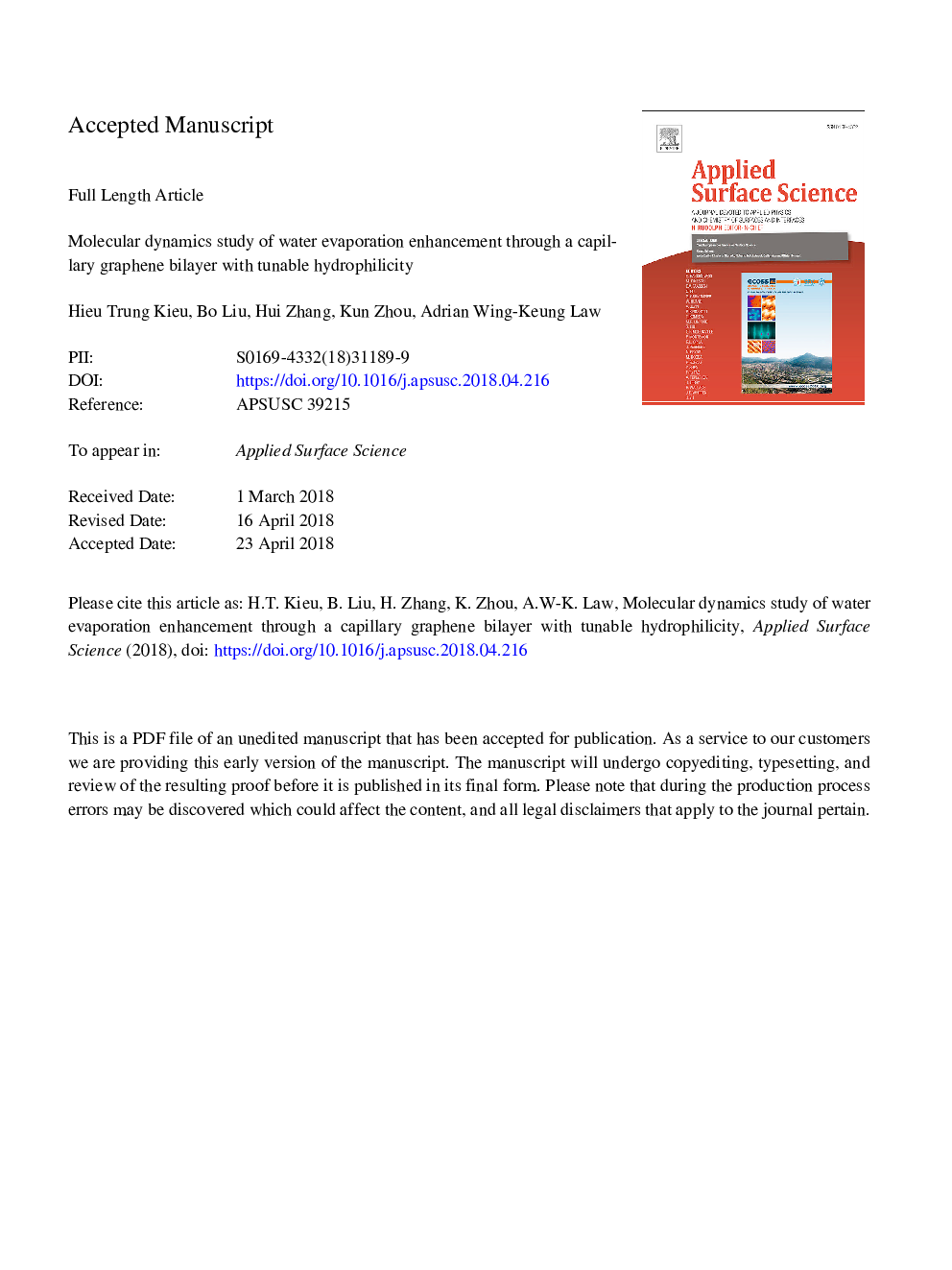| Article ID | Journal | Published Year | Pages | File Type |
|---|---|---|---|---|
| 7833469 | Applied Surface Science | 2018 | 28 Pages |
Abstract
The rate of water evaporation as fundamental phase-change phenomenon is critically important to thermal processes in various industrial and manufacturing applications. With the development of nanotechnology, significant acceleration of evaporation rate process is now potentially feasible, which can lead to much higher efficiency, for example for thermal desalination. Recently, hollow and porous nanostructures have exhibited promising potential in the evaporation enhancement due to their capillary effect. However, the mechanism of water vapor transport through a capillary media at the nanoscale and the effect of surface properties remain unexplored. The present study investigates the evaporation behavior of water through the capillary channel of a vertically aligned graphene bilayer using molecular dynamics simulations, with tunable surface wettability by changing the surface charge states. The effects of both structural and environmental parameters, including the capillary channel distance and temperature, are also examined in detail. The results show that significant enhancement of evaporation occurs when the graphene bilayer is brought into contact with the water surface. It is also found that the evaporation behavior is mainly controlled by two factors, namely, the morphology of the liquid-gas interface and the interaction energy between the water molecules and the graphene layer.
Keywords
Related Topics
Physical Sciences and Engineering
Chemistry
Physical and Theoretical Chemistry
Authors
Hieu Trung Kieu, Bo Liu, Hui Zhang, Kun Zhou, Adrian Wing-Keung Law,
